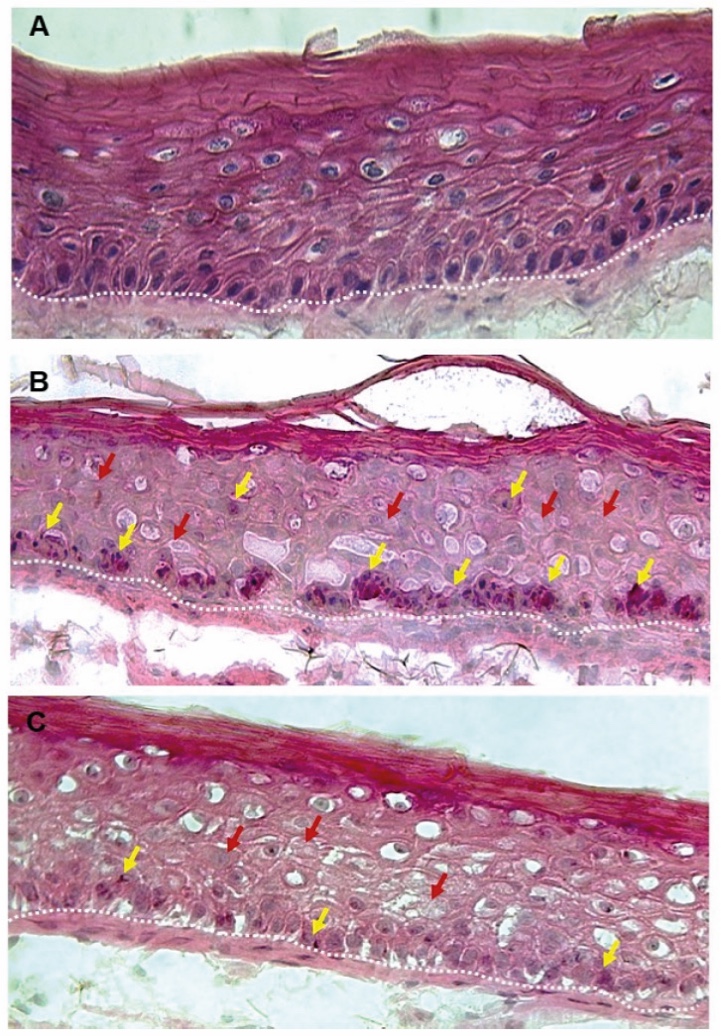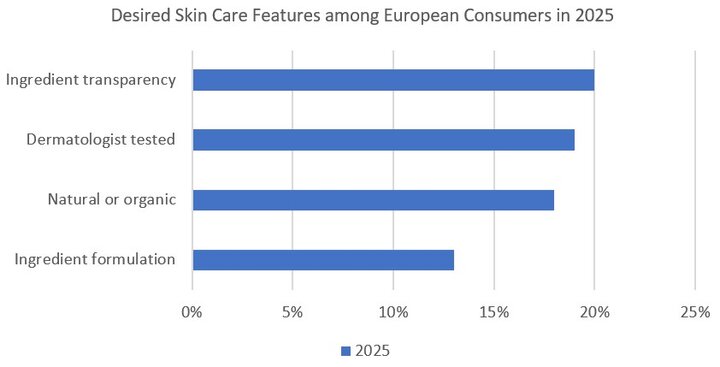
Active Ingredients
Skin care
KEYWORDS
ACTIVE INGREDIENTS;
INGREDIENT-LED BEAUTY;
AT-HOME MEDICAL AESTHETICS
Dandruff;
Malassezia
PLANT INGREDIENTS,
SUSTAINABLE,
GREEN BIOACTIVES.
peer-reviewed
Active ingredients in beauty - top trends
Magda Starula
Euromonitor International, Düsseldorf, Germany
ABSTRACT: Euromonitor International has identified the focus on ingredients as having a far-reaching impact on industries and consumers in the future. The consumer focus on health, safety and active ingredients has naturally expanded to become a prominent theme within the beauty and personal care industries. Consumers are now more interested in shopping for products containing active ingredients, rather than immediately gravitating towards certain brands. The increase in digital educational platforms, as well as ongoing consumer demand for efficacy, transparency and safety, has led to the rise of ingredient-led beauty.
??????????????????
“
“A study in healthy women providing probiotic yogurt for four weeks showed an improvement in emotional responses as measured by brain scans”

Figure 1. Skin Section with Microbiome. Most microorganisms live in the superficial layers of the stratum corneum and in the upper parts of the hair follicles. Some reside in the deeper areas of the hair follicles and are beyond the reach of ordinary disinfection procedures. There bacteria are a reservoir for recolonization after the surface bacteria are removed.
Materials and methods
Studies of major depressive disorder have been correlated with reduced Lactobacillus and Bifidobacteria and symptom severity has been correlated to changes in Firmicutes, Actinobacteria, and Bacteriodes. Gut microbiota that contain more butyrate producers have been correlated with improved quality of life (1).
A study in healthy women providing probiotic yogurt for four weeks showed an improvement in emotional responses as measured by brain scans (2). A subsequent study by Mohammadi et al. (3) investigated the impacts of probiotic yogurt and probiotic capsules over 6 weeks and found a significant improvement in depression-anxiety-stress scores in subjects taking the specific strains of probiotics contained in the yogurt or capsules. Other studies with probiotics have indicated improvements in depression scores, anxiety, postpartum depression and mood rating in an elderly population (4-7).
Other studies have indicated a benefit of probiotic supplementation in alleviating symptoms of stress. In particular, researchers have looked at stress in students as they prepared for exams, while also evaluating other health indicators such as flu and cold symptoms (1). In healthy people, there is an indication that probiotic supplementation may help to maintain memory function under conditions of acute stress.
Uncovering the ingredient-led beauty industry
Consumer focus on health, safety and ingredients has naturally expanded and become a prominent theme within skin care. Consumers have grown more interested in shopping for star ingredients first and foremost, before gravitating immediately to certain brands. Increase in digital educative platforms as well as ongoing consumer demand for efficacy, transparency and safety has led to a rise of ingredient-led beauty.
More beauty players are embracing seasonal skin care through launches of AHAs, BHAs, vitamin C and retinol. Seasonality is influencing the facial skin care market, which is affected by consumers’ beauty habits and routines changing with each season. This offers manufacturers the chance to capitalise on products for specific skin needs throughout the year. During autumn months, retinol and cosmetic acids reigned supreme. Winter months are for skin regeneration and building the hydrolipid barrier. Spring is for repeating the cycle with acids and its early months – for retinol. During summer months skin needs light moisturisers in order to regenerate from higher sun exposure. At the same time, there is a growing awareness that SPF protection is a must throughout the entire year.

Source: Euromonitor International, Voice of the Consumer: Beauty Survey, 2025
New launches focus on strengthening the skin barrier through active ingredients
An increasing number of skin care players are formulating with ‘’power’’ ingredients with
proven effects and natural origin - such as peptides, ceramides, and fruit acids. France-based
Payot’s luxury brand Payot (1) developed Neo-Serum, a daily facial serum enriched with niacinamide, hyaluronic acid, and cyclitol from the leaves of Ginkgo biloba. Another example is Kiehl’s (2) that has introduced a new addition to its best-selling Ultra Facial line: the Ultra Facial Barrier-Hydrating Cleanser. The soap-free amino acid cream-to-foam cleanser lifts away impurities while hydrating and supporting the skin’s barrier. Key ingredients include an amino acid surfactant, squalane and glycerin to remove dirt, makeup and sunscreen while providing immediate hydration.
At-home medical aesthetics
Since the pandemic, there has been a significant shift in skincare trends worldwide, largely influenced by the advanced medical aesthetics culture of countries such as South Korea. This has resulted in growing interest in treatments such as laser therapy, chemical peels, microneedling and Thermage at clinics and cosmetic surgery centres. These procedures aim to address and prevent common skin concerns, including acne, blemishes, enlarged pores and skin laxity. The concept of maintaining healthy, youthful skin through regular medical aesthetic treatments is increasingly referred to as ‘skin management’.
In response to this emerging trend, several skin care brands are integrating concepts from medical aesthetics into their product lines to appeal to consumers seeking high-performance solutions, either to replicate the effects of professional treatments or to help maintain their results. A notable example is Riddle Shot from VT Cosmetics (3) in South Korea, inspired by dermapen procedures commonly used in medical aesthetic clinics. The product has gained substantial popularity through promotional campaigns and positive customer reviews on platforms such as Amazon, and various online retailers specialising in K-beauty.
Ingredient-led beauty strongly trending in Europe
The hype surrounding ingredient-led beauty, particularly in skincare, is occupying the minds of both: manufacturers and consumers. This is supported by the voices of European consumers who claim to value ‘ingredient transparency’ highly when it comes to desired skincare features, as mentioned in the above graph. ‘Dermatologist-tested’ also appears to be an important claim for consumers. This suggests that consumers are looking for products that are scientifically proven to be effective and safe, and that do not cause irritation when addressing various skin concerns. This trend is driven by consumers prioritising scientifically backed products over marketing hype and their desire for evidence-based solutions for skin health. The rise of social media has also empowered consumers to seek expert information from dermatologists, further increasing the demand for trusted, dermatologist-tested products.
Euromonitor’s Beauty Survey found that for a number of European consumers, skin care products featuring “natural or organic” ingredients are still relevant, aligning with the broader beauty trend of
ingredient transparency and authenticity.
The future of beauty: opportunities for growth
Over the forecast period, skin care will be shaped by AI and technology, both of which will drive personalised and precise solutions for skin care routines. Stressful lifestyles will make way for more conscious and intuitive skin care formulations. Industry players will offer formulas that work smart and provide solutions to restore balance. Brands will
continue to move away from harsher ingredients that only temporarily control
breakouts. Therefore, anti-inflammatory, probiotic and post-biotic formulas designed to balance bacteria and support the skin barrier will dominate the market as more research focuses on the skin microbiome. Brands will position their products as ‘balanced’ and specific to different skin pH levels, with a focus on acne-prone and dehydrated skin.
Such ingredients will address skin concerns by using microbiome-balancing ingredients to improve overall skin health.
Conclusion
The future of cosmetics lies in the continued evolution of holistic approaches which represents a transformative shift in the industry, merging scientific advancements, natural ingredients, and wellness principles. By understanding and embracing the interconnectedness of these elements, the cosmetics industry can cultivate products that not only enhance external beauty but also contribute to the overall well-being of individuals and the planet.
The interplay between beauty from within and topical cosmetics is the key for future products. The integration of biotechnology and green chemistry is revolutionizing cosmetic formulations, offering sustainable and biocompatible alternatives.
Developers can implement blockchain to trace the journey of ingredients from source to product. Nevertheless, the efficacy of the natural products should be scientifically proven. Marketers can communicate transparency as a brand value, and parallelly educate consumers by highlighting how specific ingredients contribute to radiant and healthy skin.
By embracing the synergy between these approaches and leveraging scientific advancements, the cosmetics industry can provide consumers with comprehensive beauty solutions that cater to both internal and external dimensions of beauty.
Surfactant Applications

The application area lends itself particularly well to the use of AI. Active today in this area is the US company Potion AI (6). The company provides AI-powered formulation tools for beauty and personal care R&D. Their offerings include Potion GPT, next generation ingredient and formula databases and AI document processing. Potion’s work could have a significant impact on the entire surfactant value chain, from raw material suppliers to end consumers. By using their GPT technology, they can help target work toward novel surfactant molecules that have optimal properties for specific applications. By using their ingredient and formula databases, they can access and analyze a vast amount of data on surfactant performance, safety, and sustainability. By using their AI document processing, they can extract and organize relevant information from patents, scientific papers, and regulatory documents. These capabilities could enable Potion AI's customers to design and optimize surfactant formulations that are more effective, eco-friendly, and cost-efficient. A particularly interesting application for this type of capability is deformulation.
Deformulation is the process of reverse engineering a product's formulation by identifying and quantifying its ingredients. Deformulation can be used for various purposes, such as quality control, competitive analysis, patent infringement, or product improvement. However, deformulation can be challenging, time-consuming, and costly, as it requires sophisticated analytical techniques, expert knowledge, and access to large databases of ingredients and formulas.
AI can potentially enhance and simplify the deformulation process by using data-driven methods to infer the composition and structure of a product from its properties and performance. For example, AI can use machine learning to learn the relationships between ingredients and their effects on the product's characteristics, such as color, texture, fragrance, stability, or efficacy. AI can also use natural language processing to extract and analyze information from various sources, such as labels, patents, literature, or online reviews, to identify the possible ingredients and their concentrations in a product.

Figure 2. Skin Section with Microbiome. Most microorganisms live in the superficial layers of the stratum corneum and in the upper parts of the hair follicles. Some reside in the deeper areas of the hair follicles and are beyond the reach of ordinary disinfection procedures. There bacteria are a reservoir for recolonization after the surface bacteria are removed.
References and notes
Source: Euromonitor International, Voice of the Consumer: Beauty Survey, 2025
- https://www.payot.com/en-de/products/neo-serum-copie?_pos=1&_sid=34e9f1316&_ss=r
- https://www.kiehls.com/skincare/face-cleansers-scrubs/ultra-facial-barrier-hydrating-cleanser/WW0326KIE.html?srsltid=AfmBOoqoSwXzZ_KpvHcYBJcmRnm1Lsw9kk-NyjbhSrXCbyUyu33IXDUi
- https://globalvt-cosmetics.com/products/vt-reedle-shot-100
